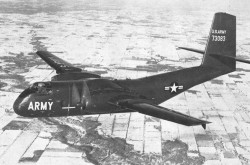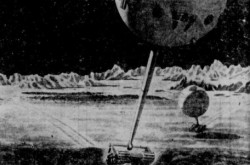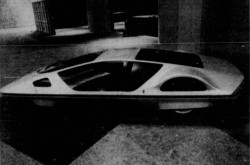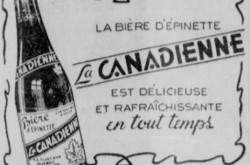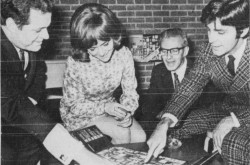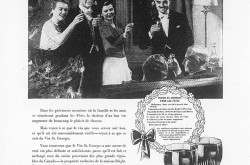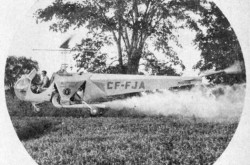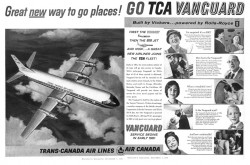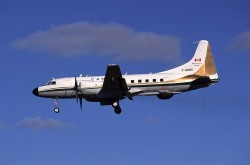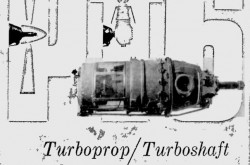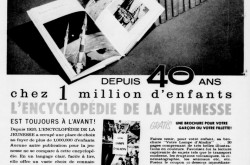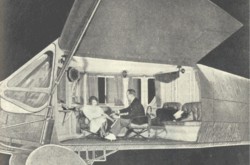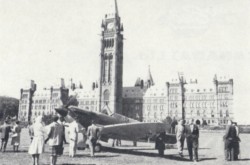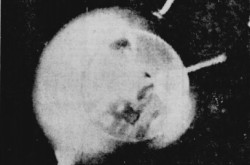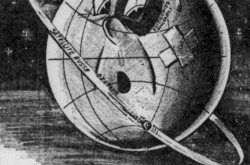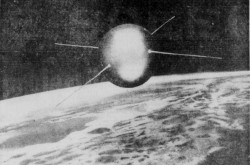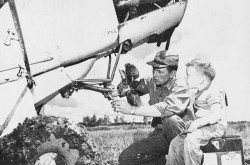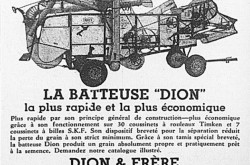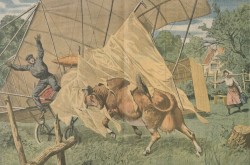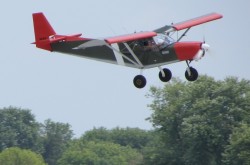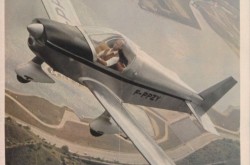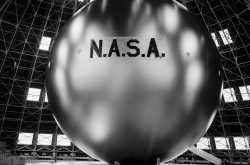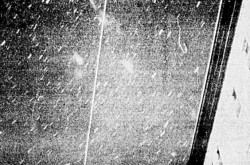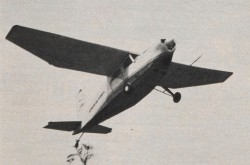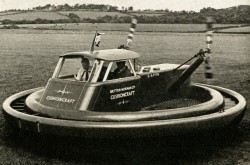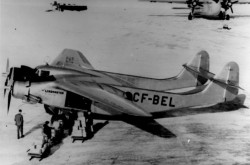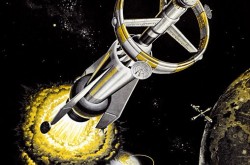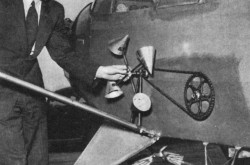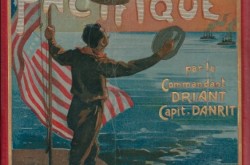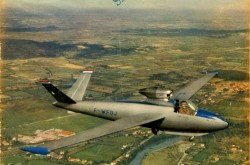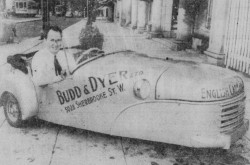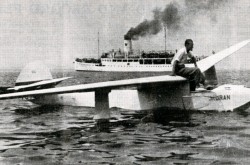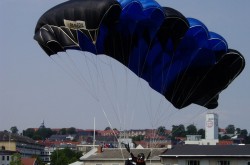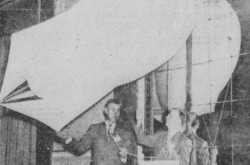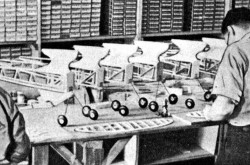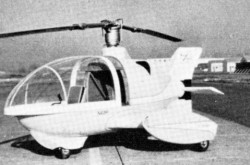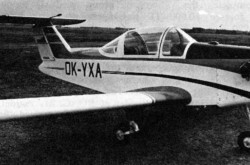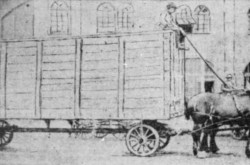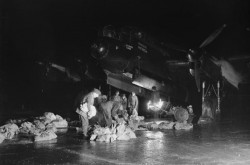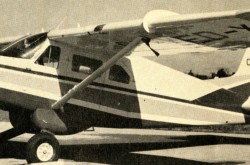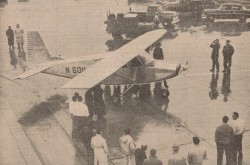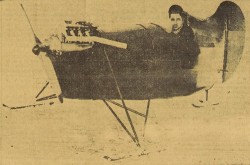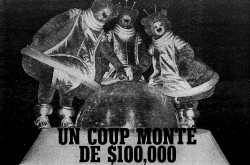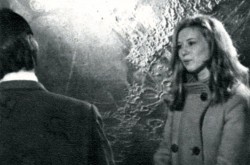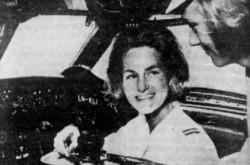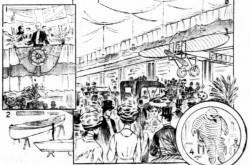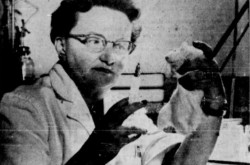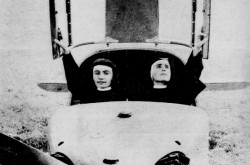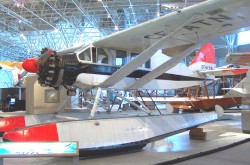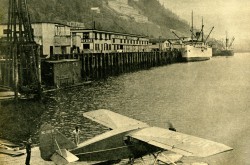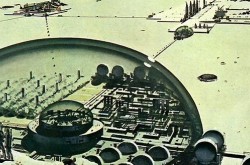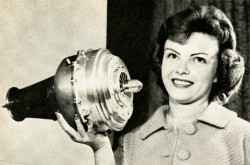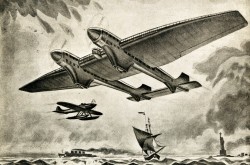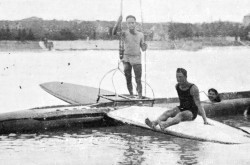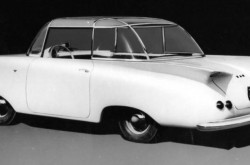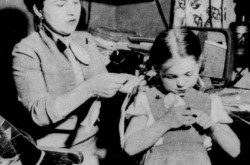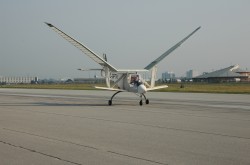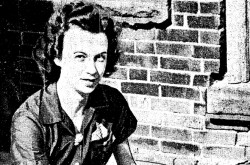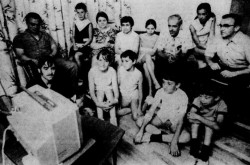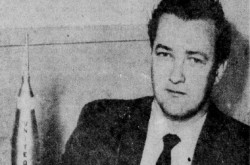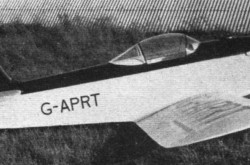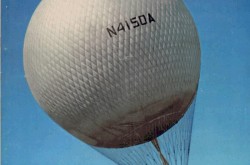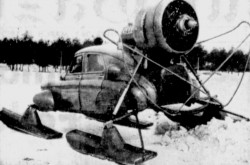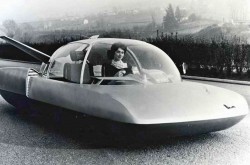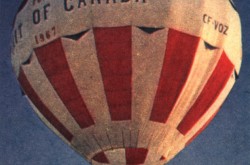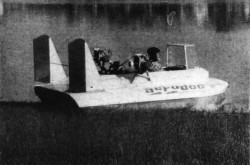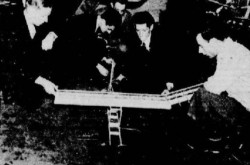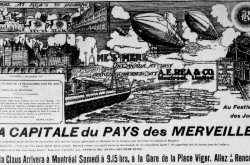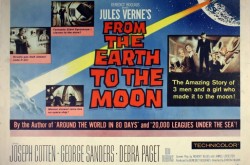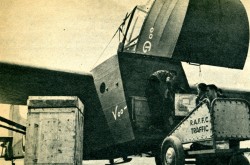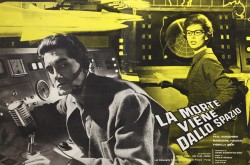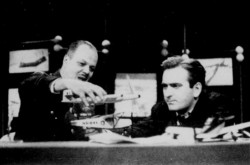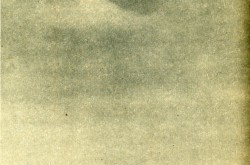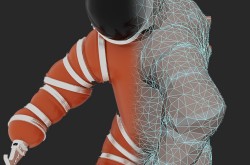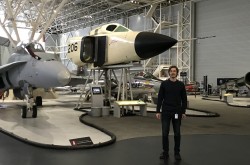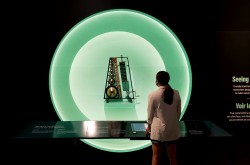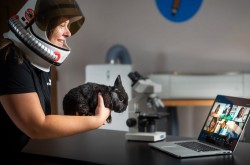One of the most dangerous toys of all times: The Gilbert Atomic Energy Lab

Happy birthday to me, happy birthday to me, happy birthday, yadda yadda yadda. And yes, I am a Taurus, which explains a lot, not that yours truly believes in astrology. Of course.
The Bristol Taurus, incidentally, was developed in the mid-1930s by Bristol Aeroplane Company Limited. This British radial air cooled aircraft engine was compact, light and quite powerful but may originally not have been as reliable as one would have liked. Busy as it was with other, more powerful engines, Bristol Aeroplane did not fully develop the Taurus. It went out of production (well?) before the end of the Second World War, and…
What is it, my reading friend? You did not join our band of merry humans this week to hear (read?) about engines? Toys, you say? Indeed, you are right.
Educational toys designed to spark the interest of young Homo sapiens, primarily boys as we all know, and long live patriarchy, in all sorts of technological and scientific things and ideas, go way, way back. You will remember that, in January 2019, you and I learned all there was / is to know about the Kosmos Spielcomputer Logikus, a West German electro-mechanical calculator, and not a computer at all, put on the market by Franckh’sche Verlagshandlung W. Keller und Company, a publishing house and maker of educational toys known today, in 2020, as Franckh-Kosmos Verlags-Gesellschaft mit beschränkter Haftung und Company Kommanditgesellschaft.
Now please give me a moment to catch my breath. That was quite a mouthful.
One could argue that the story of the item at the heart of this week’s issue of our blog / bulletin / thingee, the Gilbert Atomic Energy Lab, began in February 1884 with the birth, in the United States, of Alfred Carlton Gilbert. I know, I know, we want to talk (read?) about cool stuff, or hot stuff giving the presence of uranium, but people always get in the way. If it was not for Homo sapiens, the Earth would be a paradise, you know. Dodos would still go down century old pathways on the island of Mauritius, passenger / wild pigeons would still blacken the skies of North America and countless species would not be on the verge of extinction. And bees would not be in trouble. Mind you, the climate of the Earth would not be spiralling out of control either.
Sorry. Sorry. Climate change is not real and, if it is, the trees are to blame anyway, and dark forces, like “scientists,” tree huggers, vegans, etc., are conspiring to destabilise the divinely ordained economy of the Western world. Very bad. Lock them up! But back to our story.
Before we get there, please note that the Québec French word for meat pie, tourtière, is not derived from the (Québec?) French name of the passenger pigeon, which is tourte voyageuse. Nay, it is not. This word derived / derives from the word tourtière, which is a round pie pan / dish used to bake tourtes, which are meat or fruit pies.
Now, why was the passenger pigeon called tourte in French?
This was not a rhetorical question. Yours truly expects some sort of answer… Nothing? Sigh. Let’s move on.
Unlike the great majority of young Americans of his generation, especially female ones, Gilbert attended university. Would you believe that he paid for his bachelor’s degree in sports medicine by working as a magician?
During the 1900s, this accomplished amateur athlete set 2 world records for pole vaulting and tied for gold at the Games of the IV Olympiad, in other words the 1908 summer Olympic Games, which were held in London, in jolly olde England.
I wonder if Howard Joel Wolowitz, one of the main characters of the American television series The Big Bang Theory, mentioned in a December 2019 of our blog / bulletin / thingee, got paid when he performed his magic tricks in front of children, but I digress.
You may not be surprised to hear (read?) that Gilbert chose not to pursue a medical career. In 1907, he co-founded Mysto Manufacturing Company to produce magic sets. Said company became A.C. Gilbert Company around 1916.
Inspired by the steel girders used on a railroad he had seen in 1911, Gilbert introduced a world famous construction toy, the Mysto Erector Structural Steel Builder, in 1913. Production soon took off. By the mid 1930s, Mysto Manufacturing / A.C. Gilbert had sold no less than 30 million Erector sets.
Did you know that the Erector by Meccano construction toy still existed as of 2020? Better yet, did you know that this toy was the property of a global toy and children entertainment (PAW Patrol, Air Hogs, etc.) firm based in Toronto, Ontario, Spin Master Limited? But back to our story.
In 1918, the American involvement in the First World War came within a hair’s breadth of destroying Gilbert’s livelihood, and that of other American toy manufacturers. You see, the American government seriously considering banning the production of toys. Gilbert having successfully lobbied against this measure, he became “the man who saved Christmas” in the eyes of many Americans, especially journalists.
With the return of peace, A.C. Gilbert gradually diversified its production. It put out educational toys like chemistry sets and microbiology sets, which included a microscope. The firm also became a major player in the model train industry, in the late 1930s. Sheldon Lee Cooper, another main character of the aforementioned The Big Bang Theory, mentioned in January and November 2019 issues of our you know what, would be very pleased.
You see, Gilbert, the Homo sapiens, not the firm, had come to believe that toys had a significant role to play in the brainwashing, sorry, sorry, the moulding of young Americans into productive members of society.
By the way, did you know that Gilbert was one of the founding members of Toy Manufacturers of the U.S.A. Incorporated, today’s Toy Association Incorporated, in June 1916? Better yet, he was the founding president of this association.
Saddened by the fact that inventiveness, one of the foundations upon which the prosperity of the United States was based, was all but ignored by the school systems of most if not all states of that country, Gilbert founded the Gilbert Hall of Science in New York City, New York, in 1941. Dare yours truly say that this science and technology museum was / is an ancestor of the Canada Science and Technology Museum of Ottawa, Ontario? Yes, I guess I did dare. Sadly, the Gilbert Hall of Science closed before the opening of this national museum, in 1967, but back to our story.
The 1940s were of course a decade dominated by a conflict, the Second World War, whose consequences can still be felt in 2020. One of these consequences was the introduction and use of nuclear / atomic weapons.
You and I, however old / young we may be, probably cannot understand the impact that nuclear energy, both military and civilian, had on the population of the Earth at the dawn of the Cold War. Nuclear weapons in the hands of a benevolent United States, and no one else, would make war inconceivable. Countless nuclear power plants built in the future would provide electrical power in such amounts that it might as well be free.
And yes, inconceivable was / is one of the favourite words of an evil character of The Princess Bride, a 1987 romantic comedy and cult movie mentioned in a February 2018 and January 2020 issues of our you know what. What can yours truly say, I rather like that movie.
Nuclear energy, say I, had a huge impact on the population of the Earth indeed. Why do you think the bikini was called the bikini, for example?
The name popped up in France, in mid-July 1946, soon after the first of series of American nuclear bomb tests held on tiny islands in the Pacific Ocean. Bikini was the first one to be incinerated, in early-July 1946, after its indigenous population was all but forced out. As other islands suffered the same fate, or were simply obliterated in the first American tests of the new thermonuclear bombs, the local people were shunted from island to island. No one ever asked them if they wanted to move. They certainly were not disturbing anyone.
Isn’t “civilised man,” and I say (type?) man because women tend to be the saner members of our species, a real piece of work? But back to the origins of the use of the word bikini to describe a tiny 2-piece bathing suit.
Early advertising pointed out, in French, that the bikini was “the first an-atomic bomb.” Pretty bad, isn’t it?
Its creator was, you guessed it, a man, a Frenchman to be more precise, Louis Réard, who happened to be an automotive engineer. The bikini was somewhat / hugely controversial when it came out. Many / most people deemed it indecent.
Would you believe that another Frenchman, a fashion and costume designer by the name of Jacques Heim, had created a more demure 2-piece bathing suit in 1932 that he christened… atome?
And now for something completely different. Board games were very popular after the Second World War, and…
May I digress for a minute? Two minutes? If truth be told, yours truly would be very interested in seeing a small, simple and manageable temporary / travelling exhibition (Hello, EP and EG!) on aviation and space board games go on the floor of the world-famous Canada Aviation and Space Museum of Ottawa, a sister / brother institution of the aforementioned Canada Science and Technology Museum.
Would you believe that the first board games devoted to aviation appeared before the First World War? An American game industry giant, McLoughlin Brothers Incorporated, launched a race game in 1897. Game of To The Pole by Air Ship was inspired by the flight to the North Pole launched in July of that same year by the Swedish engineer Salomon August Andrée and his 2 companions, aboard a hydrogen balloon. Soon declared missing, the 3 men perished after a few weeks. McLoughlin Brothers also produced The Air Ship Game around 1904. An updated version arrived in stores around 1912.
In the United Kingdom, around the same time, an unidentified company produced a race game called Aeroplane Race Round the British Empire which included a stop in Ottawa. A second version of this product was released around 1920. I should also mention Jack & Jane in an Aeroplane, a 1914 (?) game by J.W. Spear & Söhne / J.W. Spear & Sons, a German company whose main export customer was the United Kingdom. Indeed, this board game was apparently produced in Bavaria, one of the kingdoms included in the German Empire.
In Australia, National Game Company marketed Around the Commonwealth by Aeroplane around 1911. This race game included a series of stops along the coasts of this vast island continent. A second version, Around the Commonwealth Aeroplane Game, arrived in stores toward the late 1920s.
In Paris, L. Saussine éditeur, a board game specialist, launched at least 3 race games related to aviation before the First World War, Jeu des grands raids, Concours d’aviation and En aéroplane, a superb product which included lead painted pawns in the shape of aeroplanes, but back to our story.
Uranium prospecting was seemingly quite the thing in the United States during the 1950s. One could never have enough uranium. How else could one achieve the mutually assured destruction of the United States and Union of Soviet Socialist Republics (USSR), not to mention the rest of the planet? Better dead than red – an expression that sounds a lot better in English than in French, or German, or Russian, or…
Would you believe that uranium prospecting was one of the 8 career paths toward happiness, fortune and fame offered to the families and friends who played the very popular board game Careers, launched in 1955 by American game industry giant Parker Brothers Incorporated? Sorry, you already knew that, didn’t you, and back to board games. To American nuclear board games to be more precise.
Still, it would be cool to say that Careers was still being produced in 2020, by the American firm Winning Moves Games Incorporated. There are 6 career paths and uranium prospecting was / is not one of them. I know, I know, back to board games.
Saalfield Publishing Company launched Uranium, a fairly conventional product, at some point in the 1950s.
Gardner Games Company, on the other hand, launched Uranium Rush around 1955. This award winning / educator approved (?!) board game was inspired in part by the procedures put in place by the American government to stake a claim and by the bonuses awarded by said government. The happy family playing Uranium Rush spun a dial which pointed out the spot on the board of the game where Dad or little Timmy would look for uranium. Our budding prospector would then place a battery operated Geiger counter, not a real one of course, I hope, on the spot in question. If said counter lit up and buzzed, there was uranium in them thar hills, which meant that the player got a $ 50 000 bonus. The winner of the game, “just as in real life,” to quote the promotional blurb, was the individual with the most cash / dough / moolah.
Let us lighten up the atmosphere a little, my reading friend. Would you care to read the caption of the photograph yours truly used to initiate this issue of our blog / bulletin / thingee? Yes? Wunderbar.
Stefan Olsen, aged 8, learns the mysteries of atomic energy, by using this small toy atomic laboratory on display at the American toy fair in New York City. Although equipped with a Geiger counter and radioactive ores, this toy is harmless and offers only very peaceful possibilities.
And no, your mind is not playing tricks on you. The toy in question really included radioactive ore samples. What could possibly go wrong? Said toy was the Gilbert Atomic Energy Lab, and here it is, in all its glory, and…

Both exciting and safe, the Gilbert Atomic Energy Lab. Wikipedia.
Why the shocked look, my reading friend? This thingee is, after all, a toy.
Said toy was No. 238 or, more precisely, No. U-238 in the long list of products produced by A.C. Gilbert. This unusual descriptor was chosen in reference to the most common form of uranium found in nature, Uranium-238, but I digress.
Gilbert was seemingly quite proud of the Atomic Energy Lab, his most spectacular educational toy, his words, not mine, and one of the many chemistry- / physics-related toys on the market in the late 1940s and early 1950s. It was exciting, it was safe and it was accurate, said this gentleman who was sometimes / often compared to Walter Elias “Walt” Disney, Junior, for his creative genius.
Indeed, some of the brightest nuclear physicists in the United States, including some from the Massachusetts Institute of Technology (MIT), a world famous institution of higher learning mentioned in July 2019, December 2019 and February 2020 issues of our blog / bulletin / thingee, had graciously agreed to help A.C. Gilbert develop the Atomic Energy Lab. Like many other educational toys of its time, the latter gently directed young Americans, boys really, toward a career in science and technology.
And yes, my reading friend, the aforementioned Wolowitz had a master’s degree from MIT. Small world, isn’t it?
Eager to improve public understanding of nuclear energy and emphasise the positive aspects of our friend the atom, individuals within the American government all but applauded A.C. Gilbert’s efforts toward the development of this new toy.
Incidentally, Our Friend the Atom was / is the title of an episode of the American television series Walt Disney’s Disneyland first aired in January 1957, and of a book published in 1956 – 2 glorious examples of the pro-nuclear propaganda spewed out by various governments eager to promote the peaceful use of nuclear energy. The host of Our Friend the Atom was a German-American physicist and communicator / populariser, Heinz Haber, well known in the United States and West Germany during the 1960s and 1970s. Walt Disney’s Disneyland, Our Friend the Atom and Haber were mentioned in a November 2018 issue of our blog / bulletin / thingee, but back to our exciting, safe and accurate toy.
What did little Timmy get when his parents had the bright / explosive idea of putting an Atomic Energy Lab beneath the Christmas tree, you ask? Let us see.
Said Atomic Energy Lab contained:
- 1 partly disassembled Wilson cloud chamber, used to see the delicate, intricate and beautiful trajectories of lightly radioactive particles, whose radioactive source could be replaced for a small sum of money as the level of radioactivity produced decreased;
- 1 Geiger / Geiger-Müller counter, used to detect and measure radiation;
- 1 electroscope, used to measure the radioactivity of the various substances included in the Atomic Energy Lab;
- 1 spinthariscope, used to observe individual nuclear disintegrations;
- 4 glass jars containing radioactive ore samples with small amounts of uranium, which not would need to be replaced for a few billion years;
- 3 low level sources of radiation, which could be replaced for a small sum of money as the level of radioactivity produced decreased;
- 3 dry cell batteries;
- 1 set of pieces used to make a model of a radioactive particle;
- 1 60 or so page instruction manual, detailing more than 150 experiments, entitled Gilbert Atomic Energy Manual, written by Dr. Ralph Eugene Lapp, a physicist involved in the Manhattan Project, the research and development program which led to the production of the first nuclear weapons, two of which ended up being used against Japan in August 1945, who became the head of the nuclear physics branch of the Office of Naval Research of the United States Navy, in 1949;
- 1 32 page introduction to the world of radioactivity in comic book form published in 1948, entitled Learn How Dagwood Splits the Atom, by the famous cartoonist and head of the educational division / department of cartoon industry giant King Features Syndicate Incorporated, Joseph “Joe” Musial, with contributions by a couple of (Manhattan Project?) physicists, and an introduction by well-known author / columnist / journalist Robert Bernard “Bob” Considine and a foreword / preface written by the far better known Leslie Richard Groves, Junior, the abrasive United States Army Air Forces / United States Air Force officer in charge of said Manhattan Project, then retired;
- 1 how to book on uranium prospecting, entitled Prospecting for Uranium (Duh. Sorry.) published in 1949 by the United States Atomic Energy Commission (AEC) and the United States Geological Survey; and
- an A.C. Gilbert toy catalogue.
There was a brief text inside the case of the Atomic Energy Lab which pointed out that the American government would hand over a $ 10 000 reward to any and all persons who found an (exploitable?) uranium deposit.
Interestingly, in order to include radioactive ore samples in its toy, A.C. Gilbert had to obtain a licence from the AEC.
It should be mentioned that, while the Atomic Energy Lab was perfectly safe, budding nuclear physicists were told they should refrain from breaking the seals on the glass jars containing the ore samples with small amounts of uranium. You see, said samples tended to flake and / or crumble, which could result in the spread of radioactive dust and / or particles in the little house in the prairie of said budding nuclear physicist, which might impair the results of experiments performed with the Atomic Energy Lab’s Geiger / Geiger-Müller counter. This spread might also prevent our young friend from playing hide and seek with her / his best friends forever, using a radioactive sample hidden in her / his parents’ home.
It looks as if the presence of said radioactive dust or particles in the little house was not, in itself, a source of concern. I kid you not.
A not so brief digression if I may. Did you know or, better yet, do you want to know that Learn How Dagwood Splits the Atom’s origin story had nothing to do with the Atomic Energy Lab? Indeed, that very origin owed its existence to the aforementioned Groves, who wanted to explain to his fellow Americans the ins and outs of radioactivity in an entertaining and intelligible way, using comic strip / cartoon characters. He approached the equally aforementioned Musial, who really liked the idea.
Musial thus developed, no, not Learn How Dagwood Splits the Atom. Musial initially developed an exhibition on nuclear energy, peopled with King Features Syndicate characters / stars, which went on display at the nuclear energy exhibition held in 1948 at the New York Golden Jubilee Celebration held in the big McIntosh, sorry, the big apple to commemorate said golden jubilee. This exhibition later travelled across the United States.
Would you believe that the actress and actor who played Blondie and Dagwood Bumsteads on the radio and in 28 (!) motion pictures, between 1938 and 1950, namely Penny Singleton, born Marianna Dorothy Agnes Letitia “Penny” McNulty, and Arthur Lake, born Arthur Silverlake, Junior, visited the exhibition, in New York City, in May 1951?
To a certain extent, Musial turned the exhibition into a book prepared by King Features Syndicate and Puck – The Comic Weekly, a popular comic strip insert in a great many newspapers owned by Hearst Corporation, a news industry giant founded by the legendary William Randolph Hearst. And yes, that book was Learn How Dagwood Splits the Atom.
Countless issues of this publication (250 000? 1 000 000? More?) were sent to schools across the United States and given away to children, for free. Learn How Dagwood Splits the Atom was seemingly very well received, and…
You have a question, my inquisitive reading friend? Who was / is that Dagwood, you say? Seriously? You don’t know? Really? Sigh. Blondie and Dagwood Bumstead may well have been the most popular comic strip characters of the time. Would you believe that Blondie, as the comic strip was / is called, was / is still published today, in 2020, in many countries and languages, including English and French, Canada’s official languages?
In Learn How Dagwood Splits the Atom, readers saw the Bumsteads and a whole slew of King Features Syndicate characters / stars attend a lecture on nuclear physics made by none other than Mandrake the magician, and… You don’t know him either? Sigh. Anyway, Mandrake shrank himself as well as the Bumsteads, not to mention their daughter, son and canine friend, and possibly other characters, to such an extent that they were able to see individual protons, neutrons and electrons interact.
Initially unable to physically split an atom of uranium, the very rare fissile / breakable variety known as Uranium-235, Dagwood succeeded in doing so by using a portable rocket launcher, given to him by Mandrake, to fire a neutron at said atom, thus splitting it.
Now, I ask you, my reading friend, if a hapless buffoon like Dagwood, a sandwich lover frequently and easily manipulated by his spouse and progeny, could successfully split an atom, was there anyone on this Earth who could not do it? The aforementioned USSR, for example, detonated its first nuclear weapon in August 1949, sending shockwaves across the world that still reverberate today, in 2020.
The type of portable rocket launcher used by our comic strip hero was commonly known as a bazooka. Now, did you know that the bazooka was / is also a musical instrument, invented around 1905 by future radio and film personality Robin “Bob / Robbie” Burns, when he was about 15 years old? He would play variants of this instrument for many years.
Yours truly did not know until, like, a few days ago that the famous Canadian singer songwriter Bruce Douglas Cockburn wrote a song you may find interesting, given what I wrote (typed?) a few moments ago. You can view / hear him at
Learn How Dagwood Splits the Atom came to a close with a series of textbook style questions and answers. It also mentioned the wonderful things that nuclear scientists would be able to do for medicine, industry and agriculture. To quote one of the character of this pedagogical comic book, “don’t forget scientists must learn more and more about the atom before they can harness it to make it actually go to work, BUT THEY WILL.”
Would it drive you bonkers if yours truly took this opportunity to point out that the aforementioned Considine wrote a text about the dreadful nuclear bomb test at Bikini in July 1946? Small world, isn’t it? Considine also wrote the script for a docudrama on nuclear energy, The Beginning or the End, whose premiere took place in February 1947.
Incidentally, The Beginning or the End should not be confused with Beginning of the End, a science fiction movie whose premiere took place in June 1957. That little gem featured gigantic and ever hungry, read human eating, radioactive locusts / grasshoppers. I kid you not. This scenario was / is not as crazy as it seemed, however. When they run out of plant food to devour, locusts / grasshoppers can apparently turn against each other.
And yes, my observant reading friend, the aforementioned Wilson cloud chamber was / is the main element in the Photo-Journal photograph at the beginning of this article. Said chamber was also the main element visible inside the case which contained the various elements of the Atomic Energy Lab. You thought I had forgotten to mention that detail, didn’t you? Don’t deny it. I know you too well for that. But back to the Atomic Energy Lab.
Putting that many doodads in a case did not come cheap. If truth be told, the Atomic Energy Lab was one very expensive thingee. It sold for US $ 49.50, a sum equivalent to approximately US $ 525 (Canadian $ 690) in 2019. One had / has to wonder if working class parents could afford to pay that much for a present. Mine could not, that’s for sure. Textile workers were / are not well paid. At all. And long live capitalism!
Understandably enough, it looks as if a number of toy stores cut the price of the Atomic Energy Lab at some point in 1951, 1952 and / or 1953, in order to increase sales. These attempts may have proven futile. You see, even though the Atomic Energy Lab caused a sensation at the March 1950 edition of the annual toy fair held in New York City, it did not prove popular with parents or children. Only 5 000 or so of these toys were sold, in 1950-51 in 2 slightly different versions, with a brown-ish coloured case (1950) and a red, yes, yes, red coloured one (1950-51).
Although aware that its cost was too high, Gilbert came to believe that the Atomic Energy Lab was also too complex for the little Timmys of the time. Their older sisters / brothers would get more out of it. Indeed, the physics department of at least one American university acquired some of these toys.
A.C. Gilbert replaced its Atomic Energy Lab with a chemistry lab around 1952. This large educational toy contained only a few of the elements of its predecessor, namely some radioactive ore samples, a spinthariscope and a copy of the Gilbert Atomic Energy Manual.
What is it, my shocked reading friend? You feel relieved at the fact that the Atomic Energy Lab and the chemistry lab were the only scientific toys of this type? Really? How naïve. Mind you, the former was by far the most elaborate of the lot. Anyway, yours truly was able to identify 3 other nuclear toys, so far:
- the Atomic Energy Lab, produced by the American Basic Science Club;
- the Master Laboratory, produced under the Chemcraft brand by Porter Chemical Company; and
- the Radiation Detection Kit, produced by the Library of Science.
Sadly enough, I cannot say (type?) if these educational toys proved popular.
Incidentally, Porter Chemical’s educational toy was the first nuclear toy to hit the shelves, in 1947.
Would you be surprised to read (hear?) that several American groups have put the Atomic Energy Lab among the 10 most dangerous toys of all time? And yes, the numero uno on the list was / is often the trampoline.
Would you also be surprised to read (hear?), my reading friend, that the Atomic Energy Lab is now a highly prized collectible? Yours truly wonders if one can legally have one of these things delivered by mail or courier, because of the radiation, but I digress. I seem to recall that, around 2019, a complete Atomic Energy Lab could sell for as much as US $ 5 000 (Canadian $ 6 600).
The aforementioned Gilbert took a well-earned retirement in 1954. He died in January 1961, at the age of 76.
How about the aforementioned Olsen, the young boy in the photograph at the beginning of this article, you ask? Well, yours truly was not able to figure out what became of him.
To conclude, why was the passenger pigeon called tourte voyageuse in French? Still no answer? That’s it. No pie for you today.


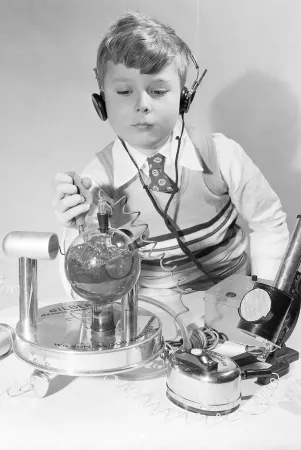


































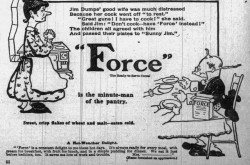
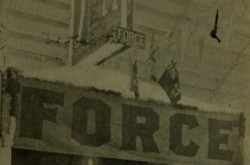
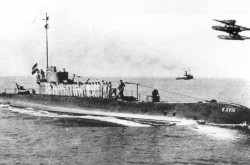
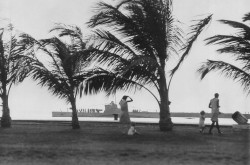
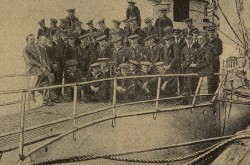
![A block of photographs showing some of the people involved in the bombing of beluga whales in the estuary and gulf of the St. Lawrence River. Anon., “La chasse aux marsouins [sic]. » Le Devoir, 15 August 1929, 6.](/sites/default/files/styles/thumbnail_7/public/2024-09/Le%20Devoir%2015%20aout%201929%20page%206.jpg?h=584f1d27&itok=TppdLItg)
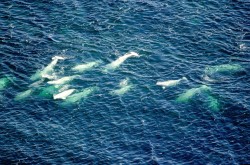
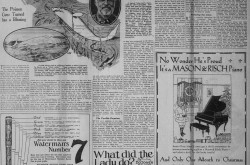

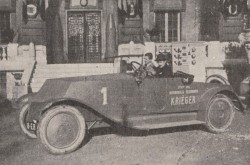
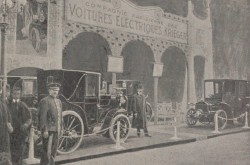
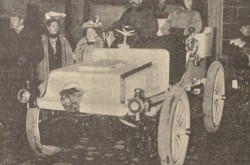
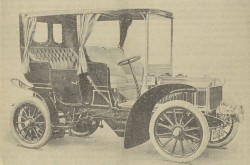

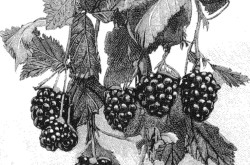
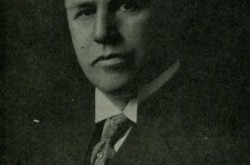
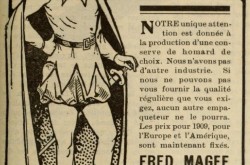
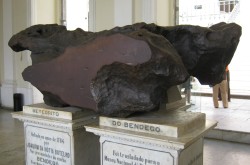
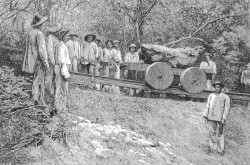
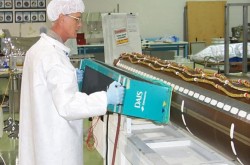

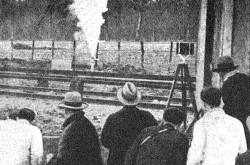
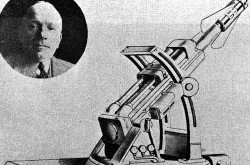
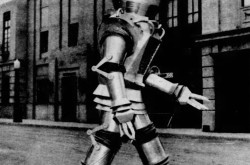

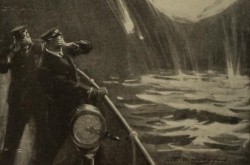
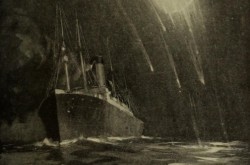
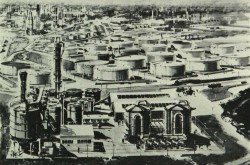

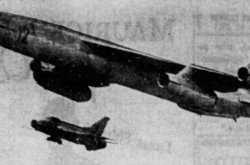
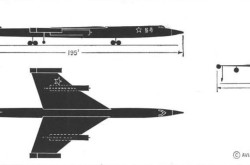
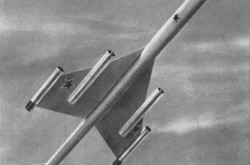
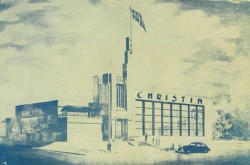
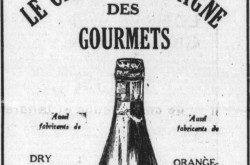
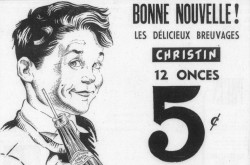
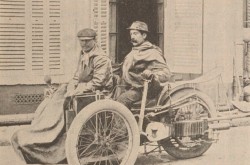
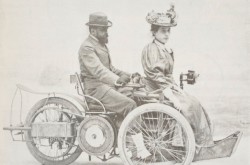
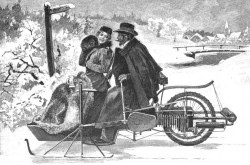
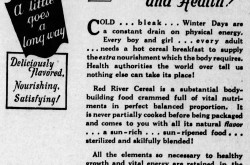

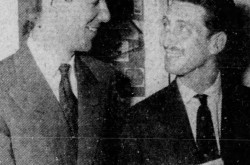
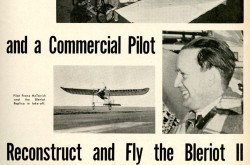
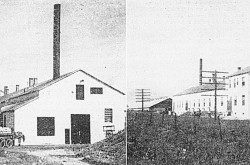
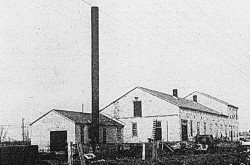



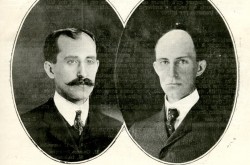

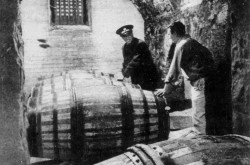
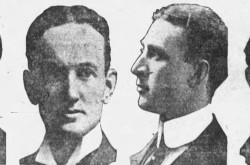
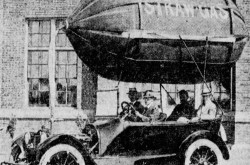
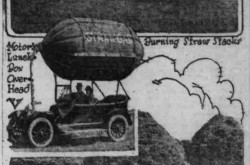
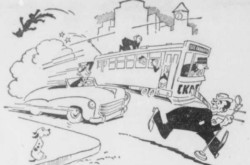

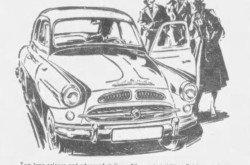
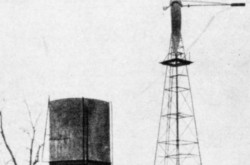
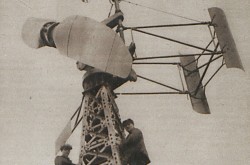
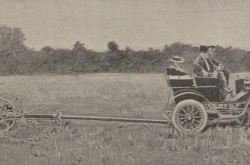

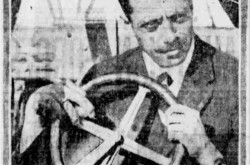
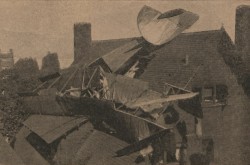
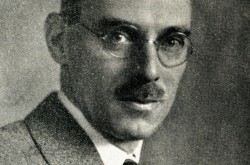
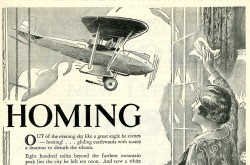
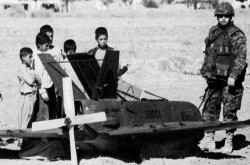
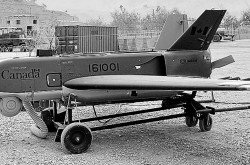
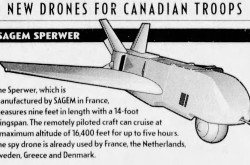
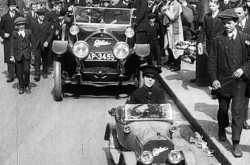
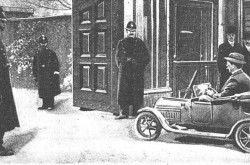
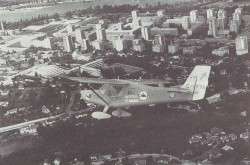
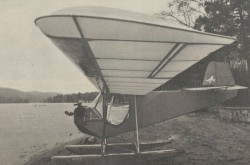

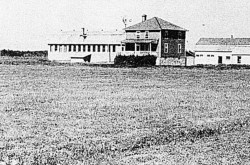
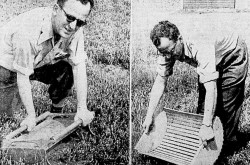
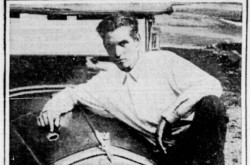
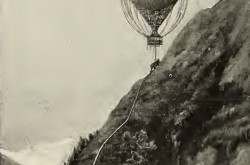
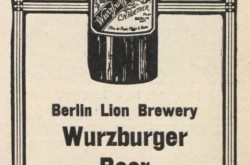

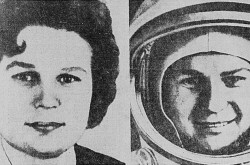
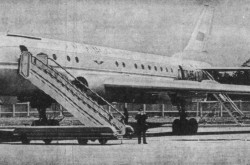
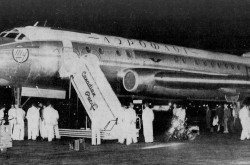
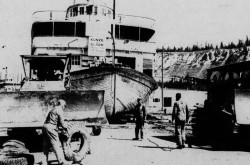
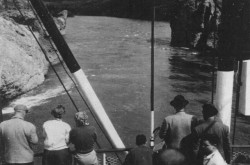
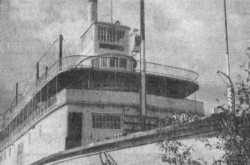
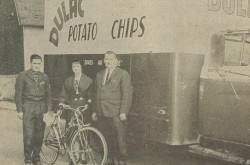
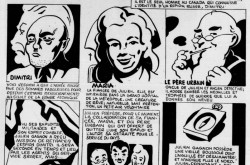
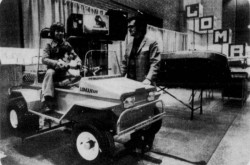
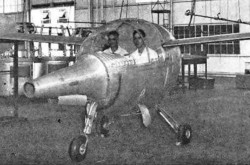
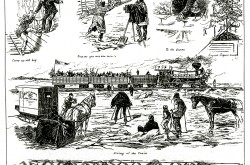
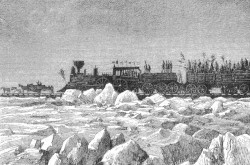
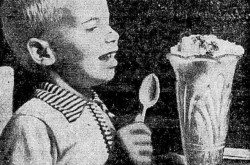
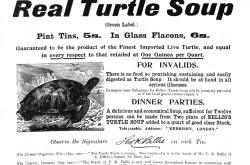
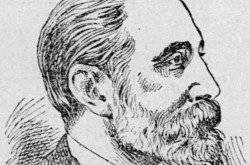
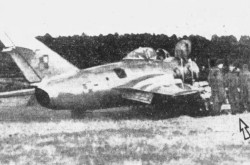
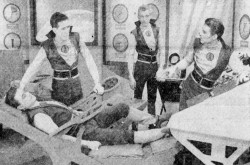
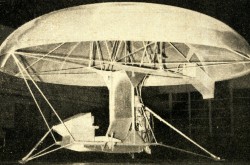
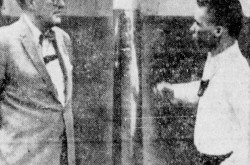
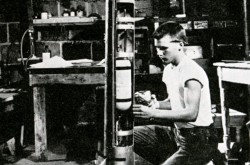
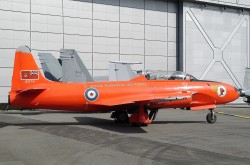
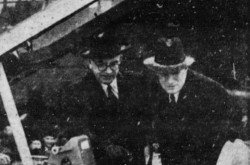
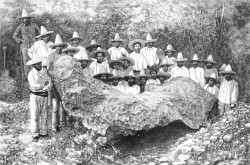
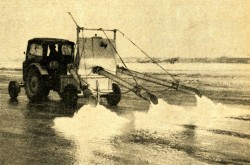
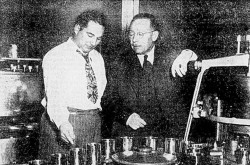
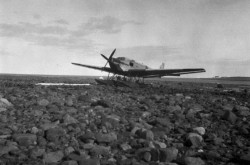
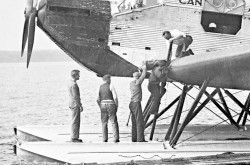
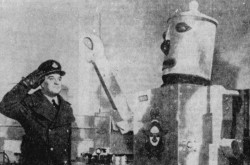
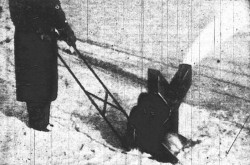
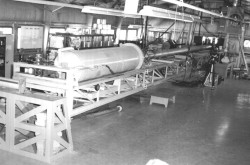

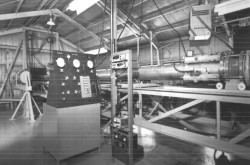
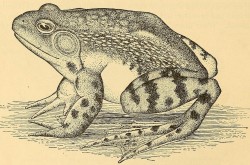
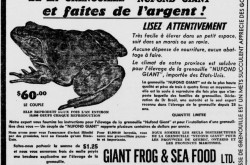
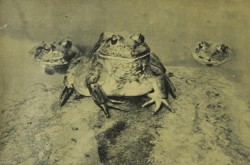
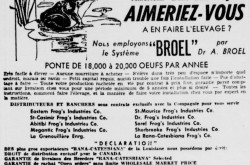
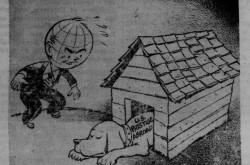
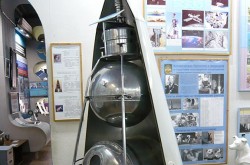
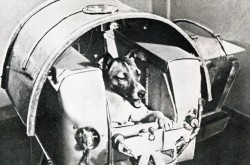
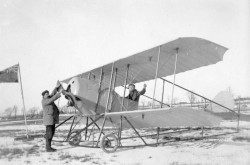
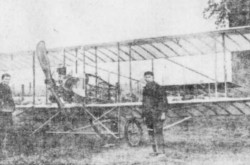
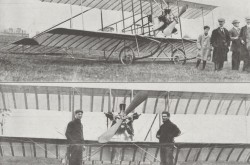
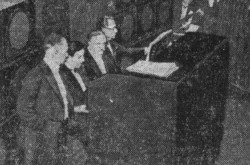
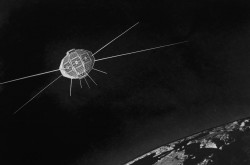
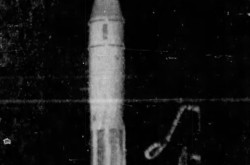
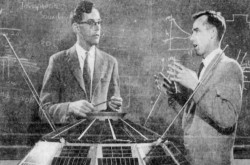
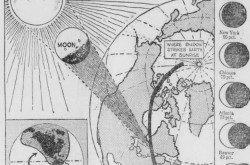



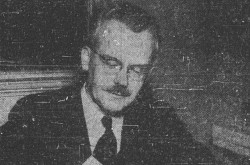
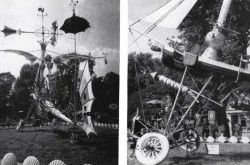
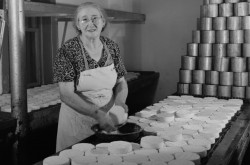
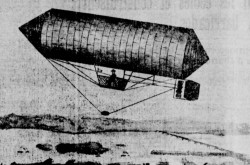
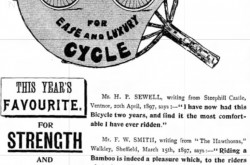
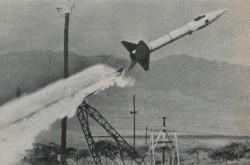
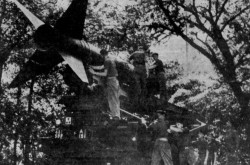
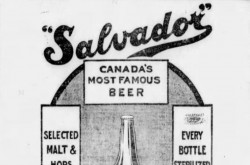

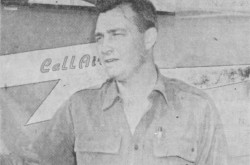
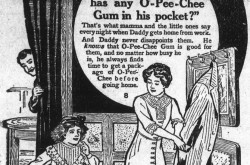
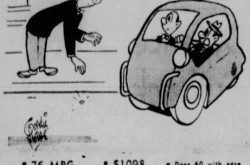
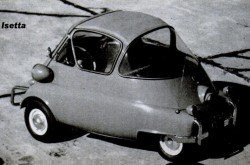
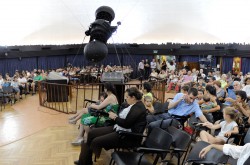
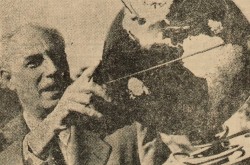
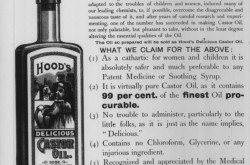
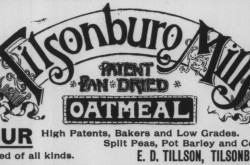
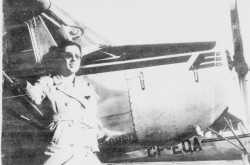
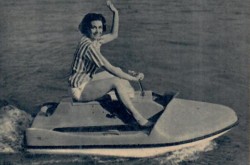

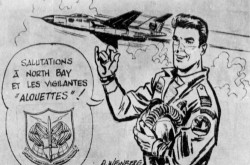
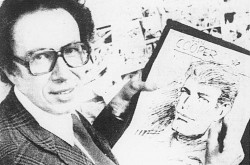
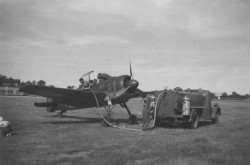

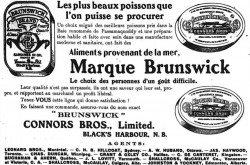


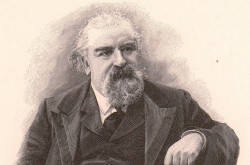
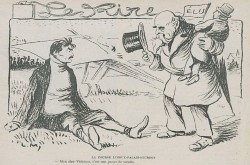
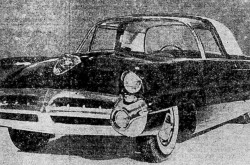
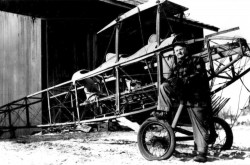
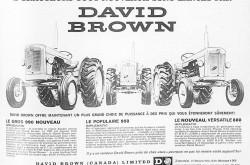
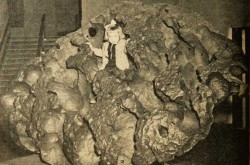
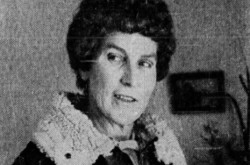
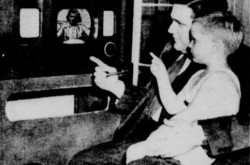
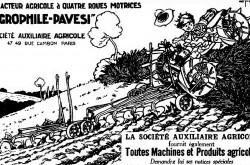
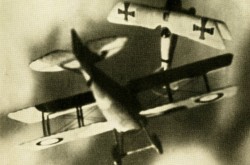
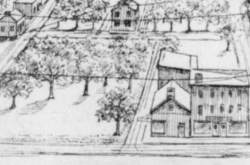
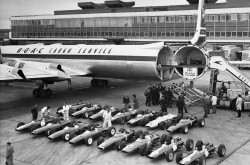
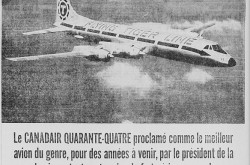
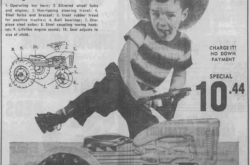
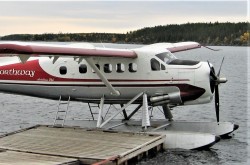
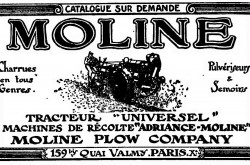
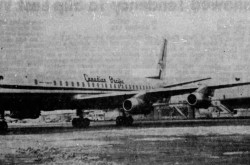
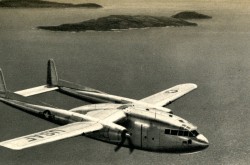
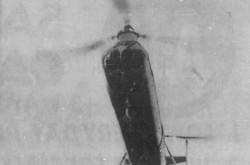

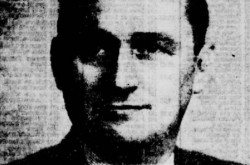
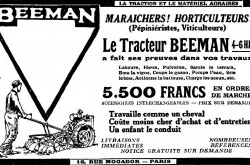
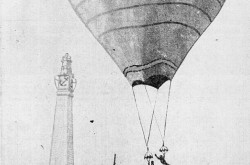

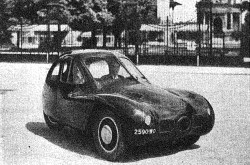
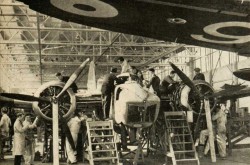
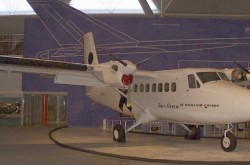
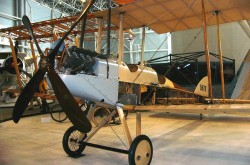
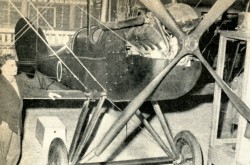

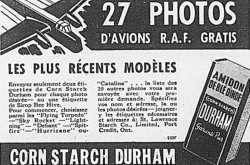

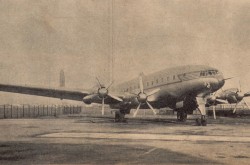
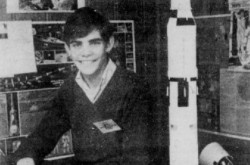
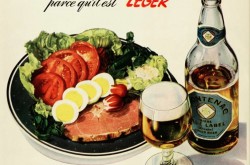
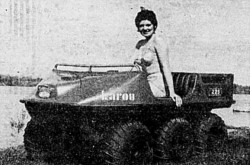
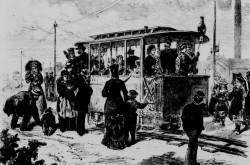
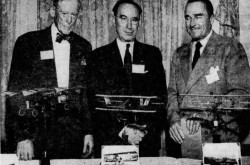
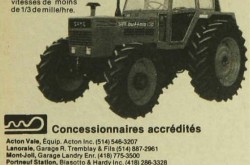
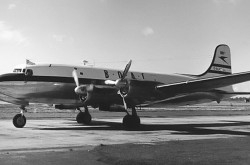
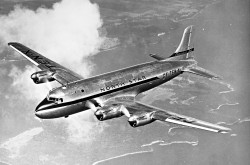
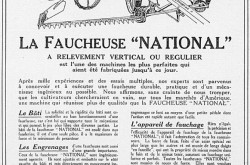
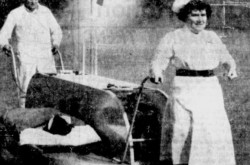
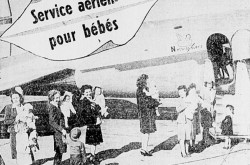
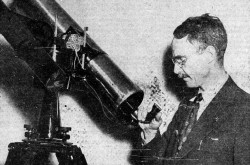
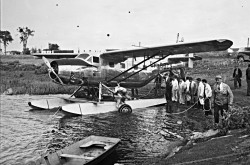
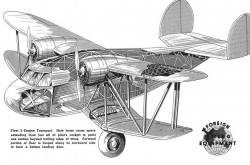
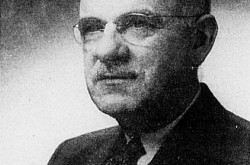
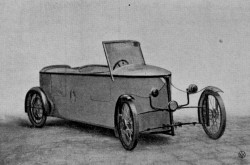
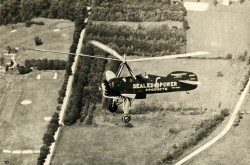
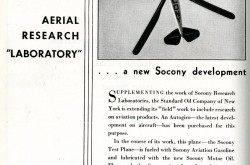
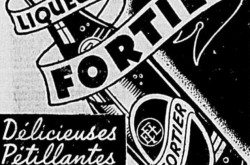
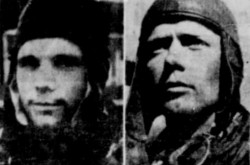
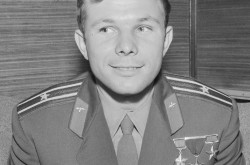
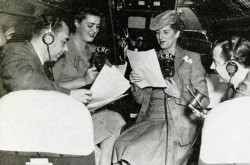
![Peter Müller at the controls [sic] of the Pedroplan, Berlin, Germany, March 1931. Anon., “Cologne contre Marseille – Le mystère du ‘Pédroplan.’ [sic]” Les Ailes, 2 April 1931, 14.](/sites/default/files/styles/thumbnail_7/public/2021-04/Les%20Ailes%202%20avril%201931%20version%20big.jpg?h=eafd0ed4&itok=WnBZ5gMf)
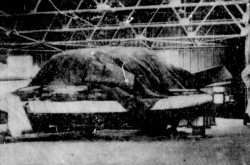
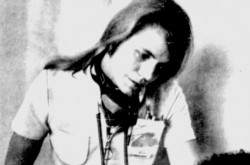
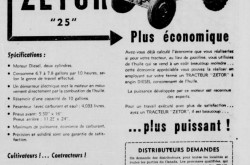
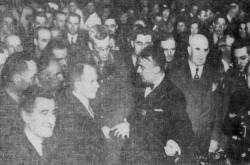
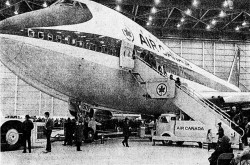
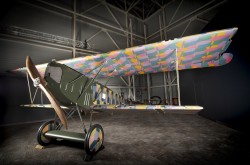
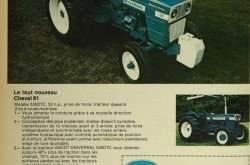
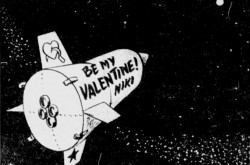
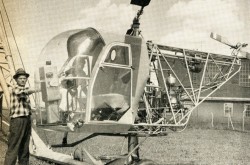

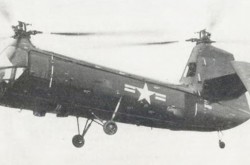
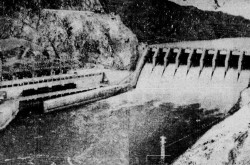
![One of the first de Havilland Canada Chipmunk imported to the United Kingdom. Anon., “De Havilland [Canada] DHC-1 ‘Chipmunk.’” Aviation Magazine, 1 January 1951, cover.](/sites/default/files/styles/thumbnail_7/public/2021-01/Aviation%20magazine%201er%20janvier%201951%20version%202.jpg?h=2f876e0f&itok=DM4JHe5C)
